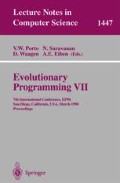Abstract
Microtubules are protein structures that develop cell specific organizations and are known to play a major role in cell morphology, protein transport, and organelle structure. Microtubules have also been suggested as a medium for long range intracellular signaling. We report on a coupled oscillator model of adaptive signal processing motivated by microtubule organization and growth dynamics. The working hypothesis is that microtubules and associated proteins serve as a fast signal integration system within neurons and that the input-output transform effected by this lattice is molded through adaptive self-stabilization (essentially error feedback acting on the microtubule organization).
Preview
Unable to display preview. Download preview PDF.
References
Alberts, B., Bray, D., Lewis, J., Raff, M., Roberts, K., and Watson, J. D.Molecular Biology of the Cell, 3 ed. Garland Publishing, Inc., New York, 1994.
Bayley, P., Sharma, K., and Martin, S. Microtubule dynamics in vitro. In Microtubules, J. Hyams and C. Lloyd, Eds. Wiley-Liss, Inc., New York, 1994, pp. 111–137.
Boole, G.Calculus of Finite Differences, 4 ed. Chelsea Publishing Company, New York, 1958.
Burgoyne, R. D. High molecular weight microtubule-associated proteins of the brain. In The Neuronal Cytoskeleton. Wiley-Liss, Inc., New York, 1991, pp. 75–91.
Chen, J., and Conrad, M. Learning synergy in a multilevel neuronal architecture. BioSystems 32 (1994), 111–142.
Chopard, B. Strings: A cellular automata model of moving objects. In Cellular Automata and Modeling of Complex Physical Systems (1990), P. Manneville, N. Boccara, G. Vichniac, and R. Bidaux, Eds., vol. 46 of Springer Proceedings in Physics, Springer-Verlag, Berlin, pp. 246–256.
Conrad, M. Electronic instabilities in biological information processing. In Molecular Electronics, P. Lazarev, Ed. Kluwer Academic Publishers, Dordrecht, 1991, pp. 41–50.
Conrad, M. Emergent computation through self-assembly. Nanobiology 2 (1993) 5–30.
Conrad, M., Kampfner, R., Kirby, K., Rizki, E., Schleis, G., Smalz, R., and Trenary, R. Towards an artificial brain. BioSystems 23 (1989), 175–218.
Eriksson, K., Estep, D., Hansbo, P., and Johnson, C.Computational Differential Equations. Cambridge University Press, Sweden, 1996.
Hameroff, S.Ultimate Computing. Elsevier Science Publishers B.V., Amsterdam 1987.
Kirkatrick, F. New models of cellular control: membrane cytoskeletons, membrane curvature potential, and possible interactions. BioSystems 11 (1979), 85–92.
Lange, G., Mandelkow, E.-M., Jagla, A., and Mandelkow, E. Tubulin oligomers and microtububule oscillations: Antagonistic role of microtuble stabilizers and destabilizers. European Journal of Biochemistry 178 (1988), 61–69.
Liberman, E., Minina, S., Shklovsky-Kordy, N., and Conrad, M. Change of mechanical parameters as a possible means for information processing by the neuron. Biofizika 27 (1982), 863–870. (in Russian).
Marion, J., and Thornton, S.Classical Dynamics of Particles and Systems, 4 ed. Harcourt Brace & Company, Fort Worth, 1995.
Matsumoto, G., and Sakai, H. Microtubules inside the plasma membrane of squid giant axons and their possible physiological function. Journal of Membrane Biology 50 (1979), 1–14.
Matus, A., Huber, G., and Bernhardt, R. Neuronal microdifferentiation. Cold Spring Harbor Symposium on Quantitative Biology 48 (1982), 775–782.
Reece, G.Microcomputer Modelling by Finite Differences. Macmillan Education Ltd., London, 1986.
Timasheff, S. N. The role of double rings in the tubulin-microtubule cycle: Linkage with nucleotide binding. In AIP Conference Proceedings 226: The Living Cell In Four Dimensions (1991), G. Paillotin, Ed., vol. 48, pp. 170–179.
Ugur, A., and Conrad, M. Structuring pattern generalization through evolutionary techniques. In Evolutionary Programming VI (Lecture Notes in Computer Science) (1997), P. Angeline, R. Reynolds, J. McDonnell, and R. Eberhart, Eds., vol. 1213, Springer, Heidelberg, pp. 311–321.
Wordeman, L., and Mitchison, T. J. Dynamics of microtubule assembly in vivo. In Microtubules, J. Hyams and C. Lloyd, Eds. Wiley-Liss, Inc., New York, 1994, pp. 287–301.
Author information
Authors and Affiliations
Editor information
Rights and permissions
Copyright information
© 1998 Springer-Verlag Berlin Heidelberg
About this paper
Cite this paper
Pfaffmann, J.O., Conrad, M. (1998). Microtubule networks as a medium for adaptive information processing. In: Porto, V.W., Saravanan, N., Waagen, D., Eiben, A.E. (eds) Evolutionary Programming VII. EP 1998. Lecture Notes in Computer Science, vol 1447. Springer, Berlin, Heidelberg. https://doi.org/10.1007/BFb0040798
Download citation
DOI: https://doi.org/10.1007/BFb0040798
Published:
Publisher Name: Springer, Berlin, Heidelberg
Print ISBN: 978-3-540-64891-8
Online ISBN: 978-3-540-68515-9
eBook Packages: Springer Book Archive

